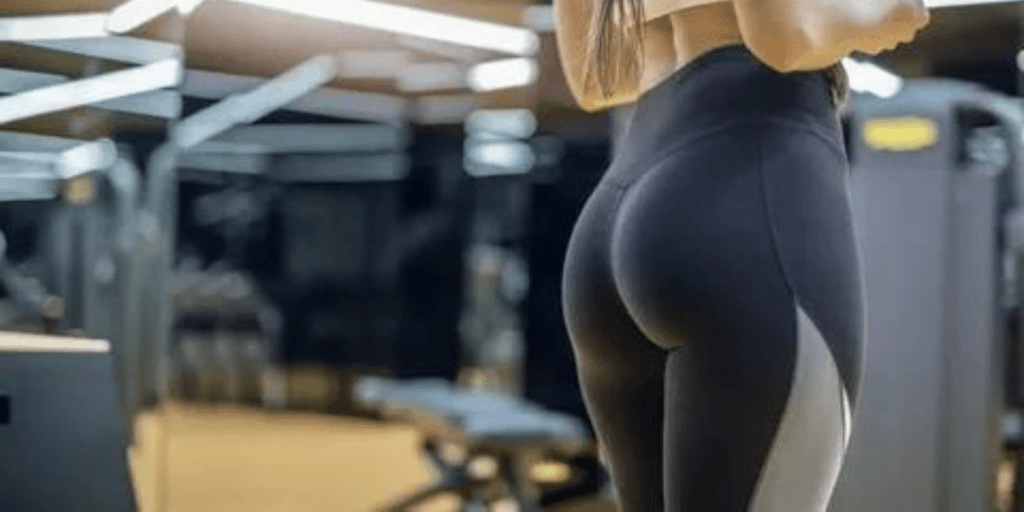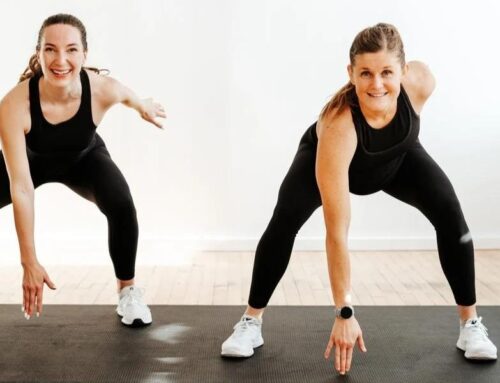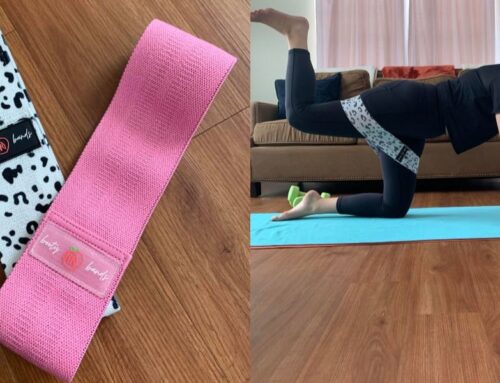
When it comes to fitness and body goals, having a well-toned and shapely butt is a popular aspiration for many people. However, achieving bigger glutes takes more than just doing a few squats and lunges. Before diving into a glute-building routine, it’s important to have a solid understanding of what goes into building and shaping this important muscle group.
In this article, we’ll discuss the factors that contribute to glute size and shape, the importance of proper form and technique in glute exercises, and the role of nutrition in building bigger glutes. We’ll also address some common misconceptions about glute training and provide tips for maximizing your results.
Whether you’re new to fitness or an experienced gym-goer, understanding what it takes to build bigger glutes can help you create a more effective and efficient workout routine.
So, let’s dive in and explore what you should know before trying to get bigger glutes.
What You Should Know Before Trying To Get Bigger Glutes
If you’re looking to get bigger glutes, you’re not alone. Many people desire a more shapely, toned backside, and there are numerous exercises and fitness programs that promise to deliver just that. However, before you jump into a glute-focused workout routine, there are a few things you should know to ensure that you achieve your goals safely and effectively.
Here are 15 things to keep in mind before trying to get a bigger butt:

1. Genetics plays a role in the shape and size of your glutes.
Genetics can play a significant role in the shape and size of your glutes. Some people are naturally predisposed to have larger, more shapely glutes, while others may have a flatter or less pronounced backside. This is due to differences in muscle fiber distribution, as well as variations in bone structure and overall body composition. However, it’s important to note that while genetics can play a role in glute shape and size, it doesn’t mean that you can’t make significant changes through targeted exercise and proper nutrition.
2. You can’t spot reduced fat from your butt.
While exercise can help to build muscle and shape your glutes, it’s important to understand that you can’t spot reduce fat from your butt. When you lose weight, you lose fat from all over your body, not just from one specific area.
So, if you’re looking to slim down your butt, you’ll need to focus on losing weight through a combination of diet and exercise. Additionally, focusing solely on cardio exercises like running or cycling may actually cause you to lose muscle mass in your glutes, making it harder to achieve the look you want.
3. Building bigger glutes takes time.
Building bigger glutes takes time and effort. It’s important to focus on a combination of strength training and proper nutrition to see results.
Aim to work your glutes at least twice a week, focusing on a variety of exercises that target all three glute muscles. Additionally, be sure to consume enough protein to support muscle growth, and give your muscles enough time to rest and recover between workouts. With consistent effort and patience, you can achieve your goals and build the glutes you desire.
Remember, it’s important to be patient and consistent, and results will come with time and effort.
4. You need to focus on compound exercises.
Compound exercises are exercises that work for multiple muscle groups at the same time. These exercises are great for building overall strength and muscle mass, including the glutes. Some great compound exercises for the glutes include squats, lunges, deadlifts, and hip thrusts. By incorporating these exercises into your workout routine, you can maximize your glute development and build a strong, shapely backside.
5. You need to eat enough calories.
Building bigger glutes requires a calorie surplus, which means you need to consume more calories than you burn. Aim to consume an additional 250-500 calories per day above your maintenance level, and track your progress to ensure that you’re gaining weight at a healthy rate. Be sure to focus on healthy, nutrient-dense foods like lean proteins, complex carbohydrates, and healthy fats, and avoid processed foods and sugary snacks.
6. Protein is essential for building muscle.
Protein is essential for muscle growth and repair, and it’s especially important when trying to build bigger glutes. Aim for 1 gram of protein per pound of body weight each day, and be sure to include a variety of protein sources in your diet. Good sources of protein include lean meats, fish, eggs, dairy products, and plant-based sources like beans and tofu.
7. You need to reduce your body fat percentage.
When it comes to working out, quality is more important than quantity. It’s better to do fewer reps with heavier weights than it is to do more reps with lighter weights.
In order to build bigger glutes, you need to reduce your body fat percentage so that your muscles are more visible. Aim for a body fat percentage of 20-30% for women and 10-20% for men.
8. Don’t neglect your cardio.
While strength training is important for building muscle and increasing overall fitness, it’s also important to incorporate cardio into your workout routine. Cardiovascular exercise helps to improve heart health, increase endurance, and burn calories. It’s recommended to engage in at least 150 minutes of moderate-intensity cardio or 75 minutes of vigorous-intensity cardio each week. This can include activities such as running, cycling, swimming, or even brisk walking.
9. Recovery is just as important as working out.
Proper recovery is essential for achieving your fitness goals and preventing injury. When you exercise, your muscles experience tiny tears that need time to heal and rebuild. Adequate rest and recovery time allows your muscles to repair and grow stronger. This includes getting enough sleep, taking rest days, and incorporating active recovery techniques such as stretching or foam rolling.
10. You need to use heavyweights.
If you want to build bigger glutes, you need to use heavyweights. This means lifting weights that are challenging for you. Start with a weight that you can comfortably lift for 10-12 reps. As you get stronger, increase the weight so that you’re challenged but still able to maintain good form.
11. You can use resistance bands.
In addition to weights, you can also use resistance bands to build bigger glutes. Resistance bands are a great option if you’re working out at home or if you don’t have access to weights. They’re also a great option for beginners because they’re more forgiving than weights. As you get stronger, you can increase the resistance by moving to a thicker band.
12. You can use bodyweight exercises.
Bodyweight exercises can be a great option for building glute strength and size, especially if you’re new to strength training or don’t have access to gym equipment.
Exercises such as squats, lunges, and glute bridges can be done using just your bodyweight, and can still be challenging and effective for building muscle. To make bodyweight exercises more challenging, you can add resistance bands or ankle weights.
13. Squats are a must.
Squats are one of the most effective exercises for targeting the glutes, as well as the quads and hamstrings.
When performing squats, it’s important to maintain proper form to ensure that you’re targeting the right muscles and avoiding injury. Keep your feet shoulder-width apart, with your toes pointing slightly outwards. Lower your hips down and back, keeping your knees behind your toes, and push through your heels to stand back up.
14. Deadlifts are another great option.
Deadlifts are another effective exercise for building glute strength and size, as well as targeting the lower back and hamstrings.
To perform a deadlift, stand with your feet shoulder-width apart, with your toes pointing forward. Bend at the hips and lower your torso down towards the ground, keeping your back flat and your core engaged. Grab the weight with an overhand grip and stand back up, squeezing your glutes at the top of the movement.
15. Give yourself time to see results.
Building bigger glutes takes time and consistency, so it’s important to be patient and give yourself time to see results. Depending on your starting point and goals, you may begin to see changes in as little as 4-6 weeks, but for significant muscle growth, it may take several months or even a year. Be consistent with your workouts, prioritize proper nutrition and recovery, and trust the process.
The bottom line
Building bigger glutes requires a combination of proper nutrition, strength training, and consistency. There is no one-size-fits-all solution, and it’s important to target all three glute muscles through a variety of exercises, including compound exercises and glute-specific movements. Additionally, heavy lifting is crucial for muscle growth, so don’t be afraid to challenge yourself with heavier weights.
It’s important to prioritize proper form and technique when performing glute exercises to avoid injury and ensure that you’re targeting the right muscles. Finally, remember that building bigger glutes takes time and patience. Don’t get discouraged if you don’t see results right away. Consistency and dedication are key, so stick to your routine and give yourself time to see progress. With the right approach and mindset, you can achieve the bigger glutes you’re looking for.



